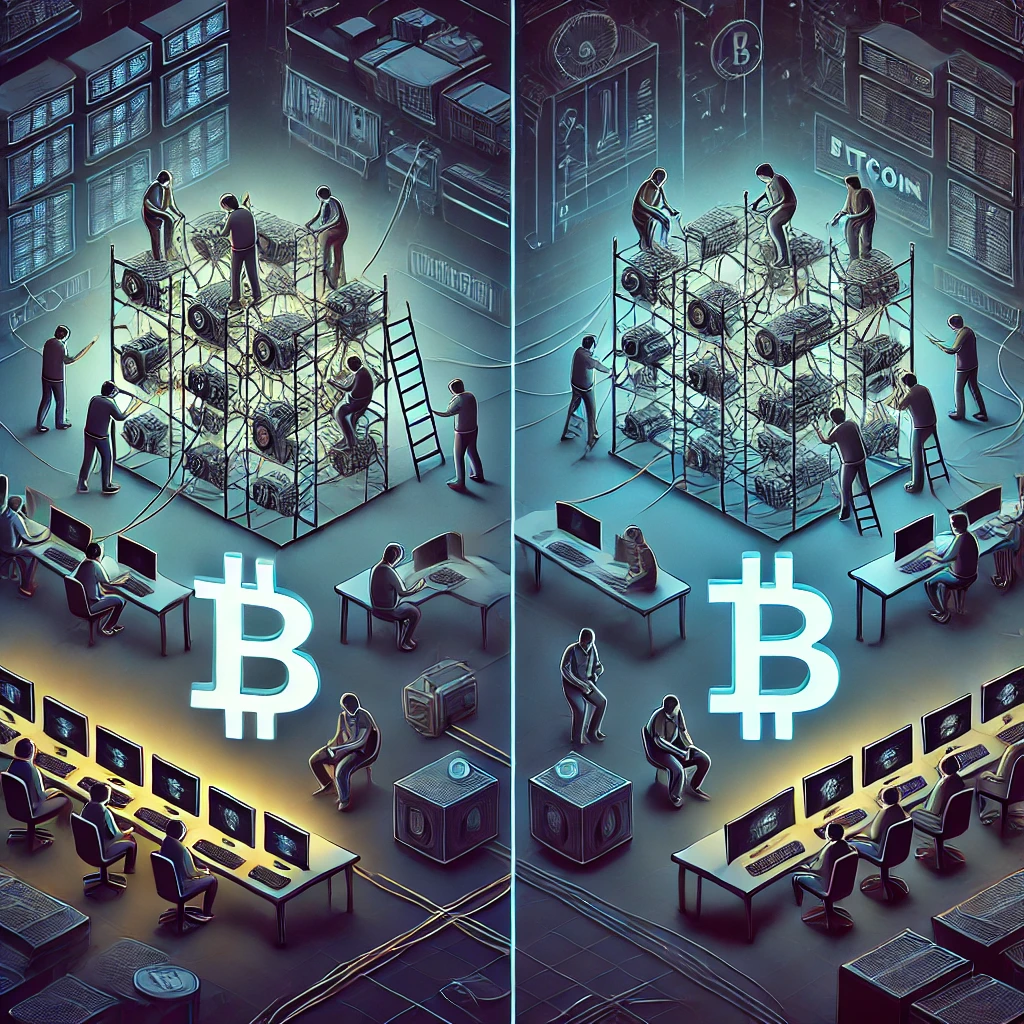In the age of digital gold rushes, the modern-day miners aren’t wielding pickaxes—they’re harnessing vast networks of computational power to unlock Bitcoin, the world’s most well-known cryptocurrency. Welcome to the world of Bitcoin mining rigs, where hardware meets hustle, and every calculation could be your ticket to a fortune—or a costly electricity bill. But don’t worry, we’ve got you covered. Whether you’re just curious or considering setting up your own rig, this article will break down everything you need to know, with a dash of wit to keep things fun.

1. The Basics of Bitcoin Mining Rigs
Imagine Bitcoin as a treasure buried deep within a digital vault. To get to it, miners (that’s you) must solve complex cryptographic puzzles. Your weapon of choice? A mining rig. But instead of a shovel, your rig consists of powerful processors designed to calculate these puzzles at lightning speeds.
Bitcoin mining rigs are specially designed systems composed of multiple processors or chips, housed in enclosures that can (and will) get really, really hot. It’s like setting up a tiny data center in your garage, except it’s constantly yelling “MATH!” in the background.
2. Understanding Hash Rate and Mining Difficulty
Here’s the science-y part: a hash rate is the measure of computational power your rig uses to solve these cryptographic puzzles. Think of it as how fast your mining rig can guess the correct combination to a lock. The higher the hash rate, the faster you solve puzzles, and the better your chances of earning Bitcoin.
But Bitcoin, ever the clever fox, doesn’t just sit around waiting to be snatched up. It adjusts. Enter mining difficulty. As more miners join the game and increase the network’s overall hash rate, the difficulty level rises like the final boss in a video game. Every 2,016 blocks (about every two weeks), Bitcoin adjusts this difficulty to keep block times consistent. So, your shiny new rig might make you feel like a tech wizard, but you’ll still be competing against a network that always tries to stay one step ahead.
3. Hardware Essentials: ASICs vs. GPUs
Ah, the age-old debate in mining circles: ASICs vs. GPUs. It’s a battle as fierce as “iPhone vs. Android,” except instead of brand loyalty, it’s all about squeezing the most profit from your rig.
- ASICs (Application-Specific Integrated Circuits): ASICs are built with one purpose in mind—mining. They’re like the bodybuilders of the mining world: bulky, powerful, and single-minded. They are efficient, fast, and devour puzzles for breakfast. But with great power comes great… upfront cost. ASICs are expensive and not very versatile. Once Bitcoin isn’t profitable, they’re as useful as a flip phone in 2024.
- GPUs (Graphics Processing Units): GPUs, on the other hand, are the Swiss Army knives of the tech world. They can mine multiple types of cryptocurrencies, making them more flexible. Plus, if you decide mining isn’t for you, you can always use them for gaming or rendering 3D cat videos. But while GPUs are more versatile, they’re slower than ASICs for Bitcoin mining.
4. Calculating Electricity Costs and Efficiency
Mining Bitcoin may feel like printing money, but don’t forget: your rig runs on electricity, and power companies want their cut. The profitability of your mining rig boils down to a simple equation: how much Bitcoin you can mine vs. how much you’re paying to run the rig.
To calculate your electricity costs, check your local rate in kilowatt-hours (kWh). Let’s say your mining rig uses 1.5 kWh, and your electricity rate is $0.10 per kWh. That’s $0.15 per hour to keep your rig running, or $3.60 a day. Now, factor that over a month, and things start adding up. Sure, your rig might be earning Bitcoin, but if you’re using more energy than you’re earning, it’s not a mining operation—it’s a very expensive space heater.
5. Pool Mining vs. Solo Mining: Pros and Cons

Imagine you’re on a treasure hunt. Do you want to dig alone or team up with others? That’s the decision between pool mining and solo mining.
- Pool Mining: In pool mining, you join forces with other miners. Together, you combine your hash rates to solve puzzles faster. The treasure gets split based on how much work each person contributed. Think of it like a group project where, for once, everyone actually does their fair share. The main benefit is more consistent payouts, even if they’re smaller.
- Solo Mining: Going solo means keeping all the rewards to yourself, but it’s a bit like playing the lottery. You might not find any treasure for weeks or even months, but when you do, it’s all yours. Solo mining can be wildly profitable—or not. It’s a high-risk, high-reward scenario.
6. The Impact of Market Volatility on Profitability
Here’s where the ride gets bumpy. Bitcoin’s price has been known to shoot to the moon—and sometimes come crashing down. If the price of Bitcoin soars, your mining efforts will be more profitable. But if it plummets, you could end up spending more on electricity than you’re earning in Bitcoin. It’s like farming: when the market’s good, you feast; when it’s bad, you’re left with some very expensive potatoes.
7. Strategies to Maximize Bitcoin Mining Rig Profitability
- Upgrade your hardware regularly: Technology evolves fast. If you’re still mining on a rig from three years ago, it’s time to consider an upgrade. Newer rigs are more efficient and can drastically improve your profitability.
- Use renewable energy: Solar panels, anyone? Mining consumes a lot of power, but using renewable energy can lower your costs and make your operation eco-friendly. Plus, it’s a great way to avoid being at the mercy of fluctuating electricity prices.
- Choose the right mining location: Some regions have cheaper electricity rates or even tax breaks for crypto miners. If you’re serious about mining, consider setting up in a crypto-friendly location (or moving your rig to your cousin’s house in Wyoming).
8. Tax Implications and Legal Considerations
If you thought your mining rig was sneaky, think again. The IRS knows about it, too. In the U.S., mined Bitcoin is considered income, and you’ll need to report it. Yes, even your digital fortune has to pay taxes. Beyond that, there are capital gains taxes to consider when you sell your Bitcoin.
Also, be aware of any local zoning laws or energy regulations. Some regions are cracking down on energy-guzzling mining farms, so do your research before plugging in.
9. Emerging Trends in Cryptocurrency Mining
The world of Bitcoin mining is constantly evolving. Green mining solutions are becoming popular, with many miners shifting toward renewable energy sources to reduce environmental impact. Additionally, innovations in ASIC hardware are pushing the boundaries of efficiency, making mining faster and more profitable than ever. Keep an eye on Bitcoin’s halving events, which occur every four years. These events cut the rewards for mining in half, significantly affecting profitability.
Unveiling the Potential of Bitcoin Mining Rig Profitability
Bitcoin mining isn’t for the faint of heart, but with the right strategy, it can be an incredibly rewarding venture. From understanding the intricacies of mining difficulty to optimizing your rig’s efficiency, there’s a lot to master. However, with careful planning, an eye on market trends, and maybe a backup plan for your electricity bills, your mining rig can become a profitable asset in the world of cryptocurrency.
So, ready to fire up those circuits and start mining? Just remember, Bitcoin may be digital, but the effort (and electricity) you put into it is very, very real.
